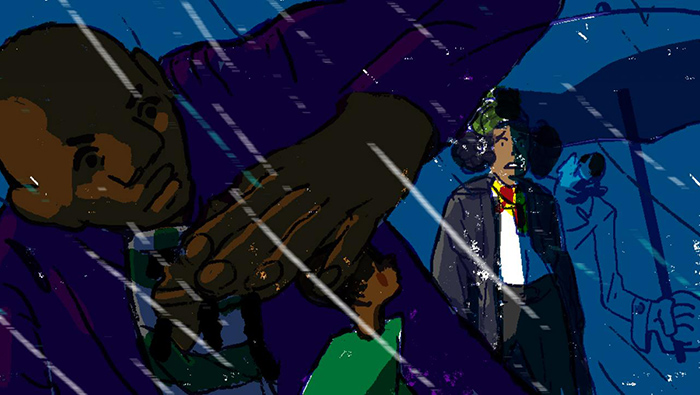Minds On
Human Rights

Create a mind map about “Human Rights.” What rights do you think every human should have? Consider the rights of both adults and children.
Press ‘Mind Map’ to access an example.
A mind map is an organizer where you can record your ideas.

Action
While the content in this learning activity is aligned to the curriculum, some content may be sensitive to individual learners. Consider reaching out to a trusted adult to share your feelings and questions.
Task 1: Treatment of Indigenous communities
For this learning activity, review the following key definitions.
Press the following tabs to access the definitions.

Press the following tabs to learn about the treatment of Indigenous communities.
Residential schools
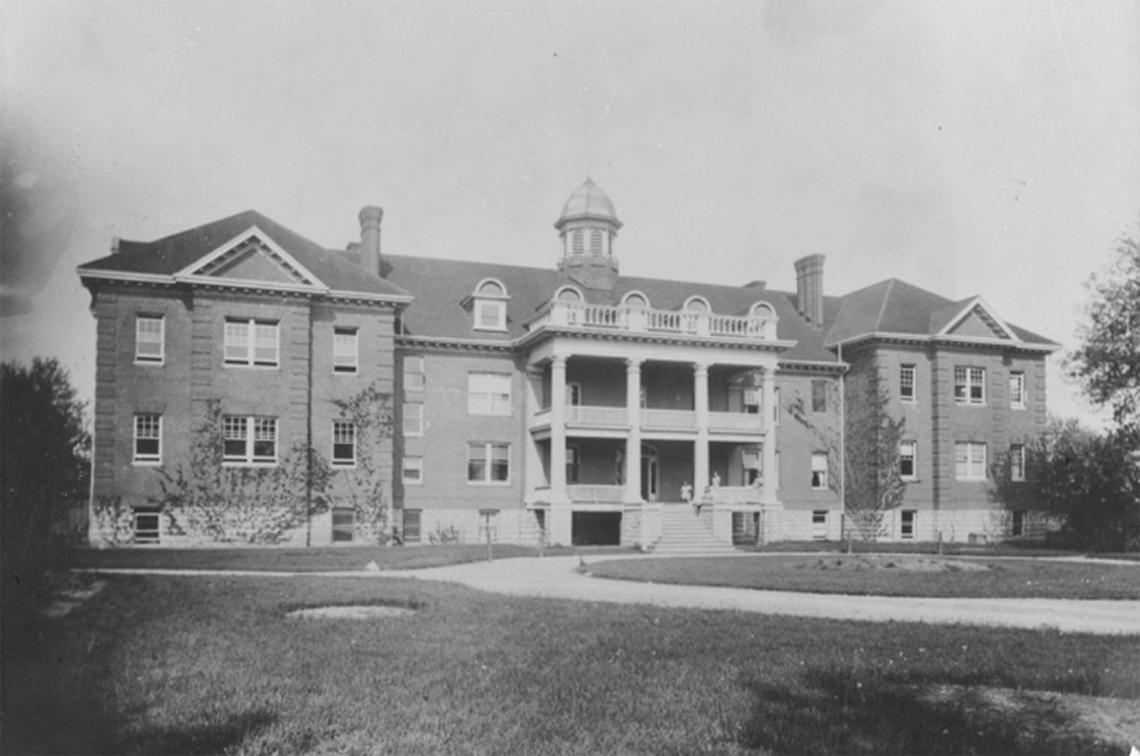
Mohawk Institute
Residential schools have a long history in Canada. In the 1830s, residential schools became part of the government and church policy. In 1842, Sir Charles Bagot (Governor General of Canada) proposed federally run “Indian Residential Schools” as a good tool for separating children from their parents and forcing Indigenous peoples away from their traditional life.
This also mandated that individuals carry only one legal status name, thus forcing British citizenships upon many, specifically the Métis, and erasing their identity and culture. One of these schools was the Mohawk Institute (located in modern-day Brantford, Ontario), which began as a day school for First Nations boys. In 1831, Mohawk Institute began accepting boarding students. The Mohawk Institute remained open until 1970.
Explore the following video for more information on residential schools in Canada.
Brainstorm
Brainstorm
How did attitudes in the 1800s towards Indigenous peoples change? How were Indigenous communities viewed by the British government? What was the impact of these views?
Press ‘Review’ to access a possible response to check your answers.
To this day, Indigenous peoples are fighting for the government to not only reconcile its harmful past treatment of Indigenous peoples, but to also revisit polices that continue to harm them.
Reading Time
Deepen your understanding
In this section of the learning activity, you have only scratched the surface on assimilation, residential schools, and the treatment of Indigenous communities in Canada’s past.
Examine the following articles to learn more about residential schools in Canada and how they are still impacting communities today.
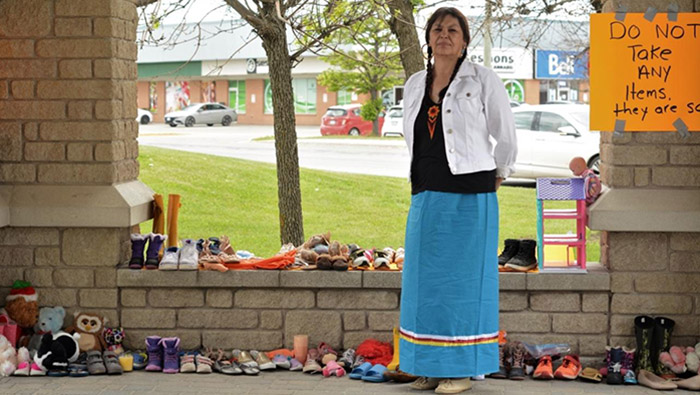
Press tvo today to access “‘Not Forgotten Children’: Honoring the Victims and Survivors of Residential Schools.”
Opens in a new tab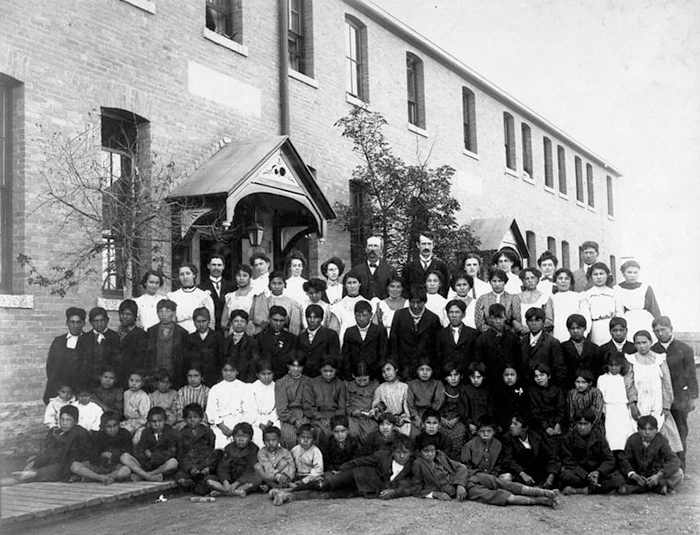
Press tvo today to access “‘Felt Through Generations’: A Timeline of Residential Schools in Canada.”
Opens in a new tab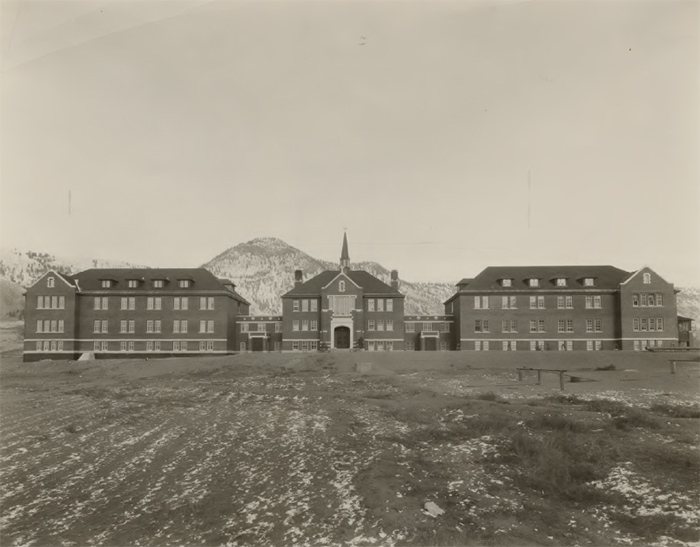
Press tvo today to access “Residential Schools are Not a Footnote in Canada’s History. They Are Its Past and Present.”
Opens in a new tabTask 2: Discrimination of Black Canadians
“When Canadians talk about slavery, we often point with pride to the role our country played in the mid‐1800s as a safe haven for Americans escaping captivity via the Underground Railroad. This, however, is only half the story. Like the United States, this land has its own history of slavery – and it is a history we should never forget.”
Source: McRae, 2018 Canadian Human Rights Museum (https://humanrights.ca/story/the-story-of-slavery-in-canadian-history)
The enslavement of African peoples was a legal process that began in Canada in the 1600s. During this time, people treated those who were enslaved as personal property that could be bought, sold, traded, and inherited. Some French colonists enslaved people through private sales. In 1760, when the British conquered the French, they put a clause in their surrender, that French inhabitants would be allowed to keep those enslaved.
Explore the following printable Advertisement in the Halifax Gazette for the Sale of Slaves document.
Press the Article button to access the "Advertisement in the Halifax Gazette for the Sale of Slaves.".
Article(Opens in a new tab)French and English colonies depended on people who were enslaved for labour to increase their personal wealth and enhance local economies. In Canada, the majority of those enslaved worked as domestic servants, and in local businesses (butcher shop, inn, taverns), or as agricultural workers (clearing land, harvesting, attending to livestock). These people had no basic human rights and were often treated inhumanely or cruelly.
By the 1820s, slavery was still legal in Canada, but the practice of enslavement was decreasing. During this time, there was an attempt at “indentureship,” which meant those who were once enslaved would continue to work for those who enslaved them but would be paid for their labour. In August of 1834, the “Slavery Abolition Act” came into effect, abolishing all slavery in Canada. The Act officially made enslavement illegal and any remaining people who were enslaved in Canada were freed.
Reading Time
Expand your learning
Explore the following articles about slavery in Canada.
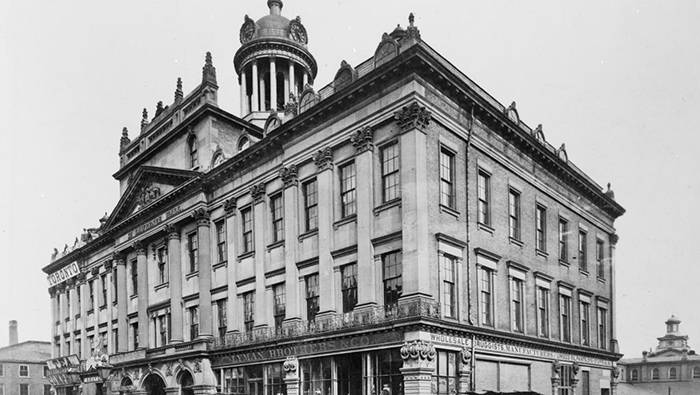
Press tvo today to access “Looking Back at Toronto’s Historic Anti-Slavery Convention of 1851.”
Opens in a new tab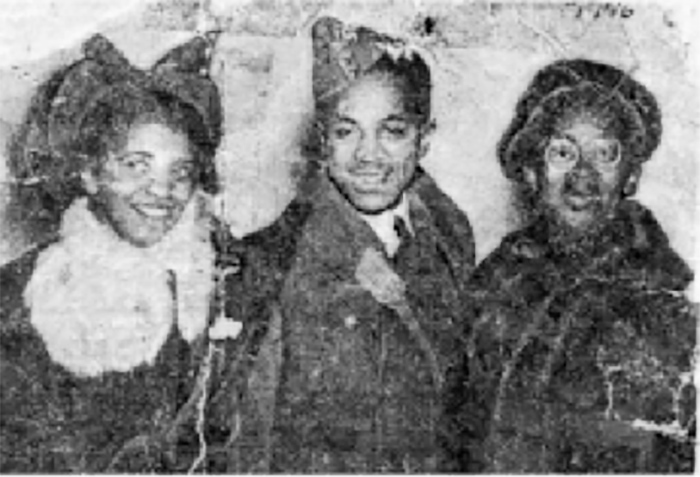
Press tvo today to access “Ontarians Should Know More About the Black History of Oakville.”
Opens in a new tabReview Questions
Now that you have explored the articles on slavery in Canada, choose one reflection question from each article to respond to using the following fillable and printable document or using a method of your choice.
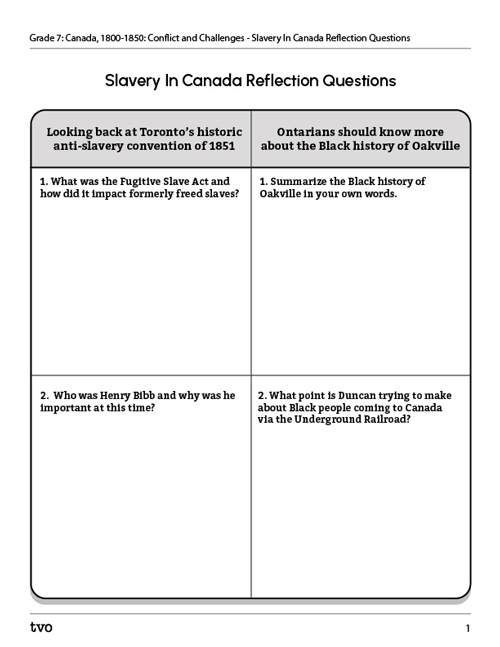
Press the Activity button to access the Slavery In Canada Reflection Questions.
Activity(Opens in a new tab)To review your answers, examine the following Review Questions Answer Key document.
| Looking back at Toronto’s historic antislavery convention of 1851 | Ontarians should know more about the Black history of Oakville |
|---|---|
|
1. What was the Fugitive Slave Act and how did it impact formerly freed slaves? The Fugitive Slave Act was passed on September 18th, 1850 and it permitted people to pursue and retrieve formerly owned enslaved people in any state, including states where slavery had been abolished. Citizens were required to help these people apprehend those they previously enslaved. This sent formerly freed enslaved people into hiding and attempts to run away were made as states became “hunting grounds” and families were broken apart. |
1. Summarize the Black history of Oakville in your own words. In the 1850s, approximately 400 Black people settled in Oakville who had escaped slavery via the Underground Railroad. Escaped enslaved people, such as James W. Hill, helped others escape slavery by aiding them to get from New York to Oakville. |
|
2. Who was Henry Bibb and why was he important at this time? Henry Bibb was born an enslaved person in 1815 and finally escaped slavery in 1840. Henry and his wife launched an anti-slavery newspaper called “Voice of the Fugitive” and founded the Refugee Home Society. These actions led to the North American Convention of Colored Freemen in which Henry was the president. The convention lasted three days in which Henry fought against slavery in the United States, and prompted the assistance of those fleeing Ontario. |
2. What point is Duncan trying to make about Black people coming to Canada via the Underground Railroad? The main idea of this article is that Black people are the “fabric of Canada” (said Duncan) and did more than just escape slavery, but rather came to Canada as entrepreneurs. For example, Duncan’s great-great-grandfather, Samuel Adams, came to Canada and invented a device called the “stonehooker” which was used to build houses. Other worked as barbers, hairdressers, gunsmiths, newspaper creators, and many other essential roles within the community. |
Press the ‘Activity’ button to access the Review Questions Answer Key.
Task 3: The Underground Railroad
What do you already know about the Underground Railroad?
Explore the following video.
The Underground Railroad was not a railroad with a train and tracks. It was a secret network of citizens who worked together. They helped those who escaped enslavement find safe houses and transport to reach freedom in the North.
In this section of the learning activity, you will use the inquiry process to investigate and draw conclusions about the Underground Railroad in Canada.
What is inquiry?
Inquiry is a multi-step process used to formulate questions, gather, organize, and analyse information, evaluate and draw conclusions, and communicate results. Although the stages are not always done in the same order, the following graphic is from the Ontario Ministry of Education which provides a summary of these steps.
Examine the diagram to review how the steps relate.
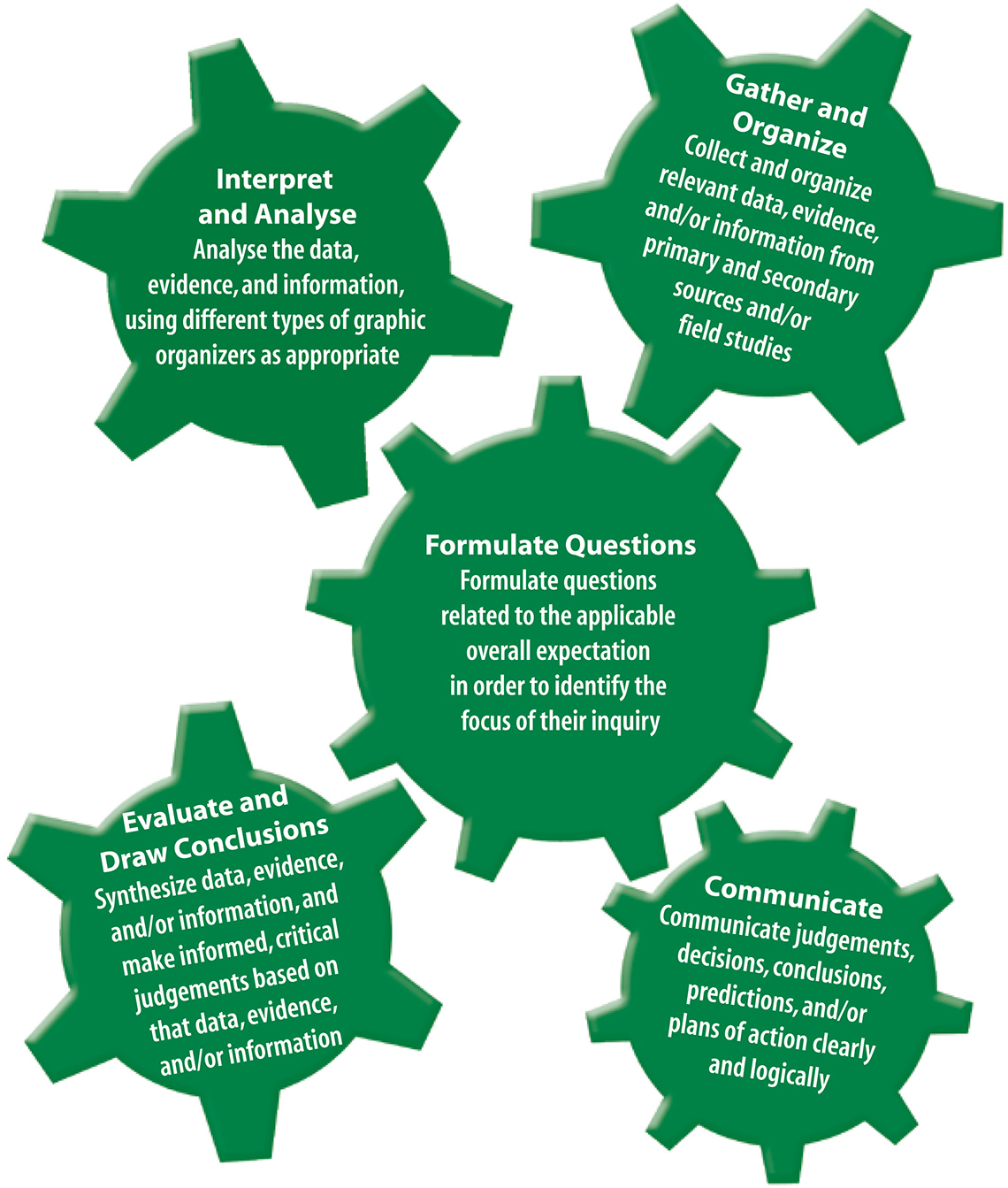
A graphic representing the inquiry process. There are five stages to the inquiry process, but they are not always done in the same order. One stage is Interpret and Analyse. At this stage we analyse the data, evidence, and information, using different types of graphic organizers as appropriate. Another stage is Gather and Organize. At this stage we collect and organize relevant data, evidence, and/or information from primary and secondary sources and/or field studies. Another stage is Formulate Questions. At this stage, we formulate questions related to the applicable overall expectation in order to identify the focus of their inquiry. Another stage is Evaluate and Draw Conclusions. At this stage we synthesize data, evidence, and/or information, and make informed, critical judgements based on that data, evidence, and/or information. Another stage is Communicate. At this stage, we communicate judgements, decisions, conclusions, predictions, and/or plans of action clearly and logically.
Use the following fillable and printable The Underground Railroad Graphic Organizer to help you conduct research. Think about the perspectives you should consider, and how it impacted Canada.
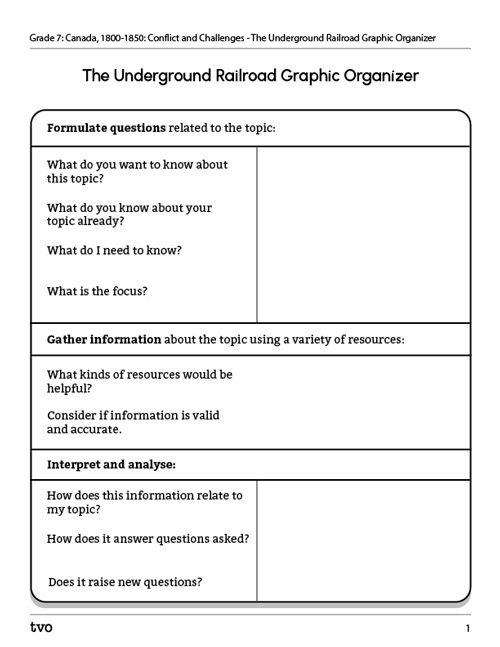
Press the Activity button to access The Underground Railroad Graphic Organizer.
Activity (Open PDF in a new window)Task 4: Modern day connection
In this learning activity, you have learned about the mistreatment of Indigenous and Black communities in Canada’s past. These groups were often targeted because they were believed to be less superior to the “white” or “British” colonist, and therefore they were not treated equally.
“No one is born hating another person because of the colour of his skin, or his background, or his religion. People must learn to hate, and if they can learn to hate, they can be taught to love, for love comes more naturally to the human heart than its opposite.” – Nelson Mandela
Source: Soken-Huberty,2020 https://www.humanrightscareers.com/issues/anti-discrimination-quotes-that-shaped-our-understanding-of-equality/
Unfortunately, discrimination still very much exists in our modern-day world. Choose one of the following personal stories or the video to explore further modern examples of discrimination and racism.
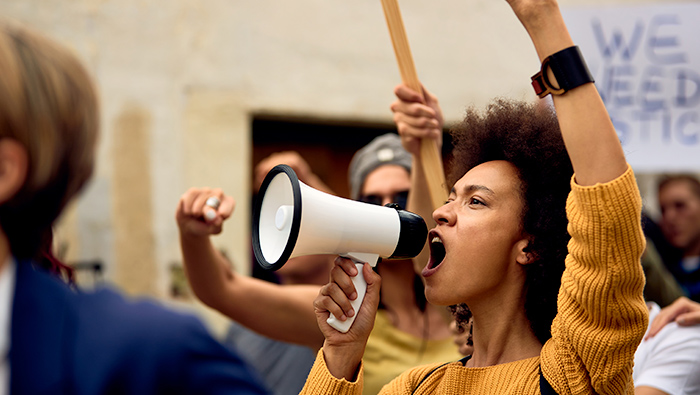
Press tvo today to access “Does Talking About Racism Make You Uncomfortable? Too Bad.”
Opens in a new tabTVO Web Series: My Native Voice
Brainstorm
Give your opinion
In your opinion, what are two things you can do to combat racism and discrimination in your community?
Record your ideas in a method of your choice.
Press the ‘Answer’ button to access a variety of examples to check your response.
- Treat everyone equally
- Educate others about what you have learned
- Stand up if you see someone being treated unfairly (or tell someone you trust)
- Include others or invite others to join you
- Celebrate diversity
- Examine your own biases
- Ask about how your school works to combat racism and discrimination; help out with these efforts
- Continue to learn more and educate yourself
Consolidation
Task 1: Show what you know!
The following activity interactive explores what you have learned about the treatment of Black and Indigenous communities.
Select the correct answer.
Test Your Skills!
Review questions
Respond to the following questions using a method of your choice. Use evidence from your learning to support your answer.
- Explain how Indigenous and Black communities were treated by British and French colonists between 1800 and 1850.
- How did these views change over time? What legal or political changes were made?
Task 2: Educate your community
Throughout this learning activity, you have investigated examples of discrimination against Indigenous and Black communities in Canada between 1800 and 1850. You have also explored modern-day discussions about discrimination and racism that exist in our world today.

To consolidate your learning, you will be creating a digital public service announcement. A public service announcement is created for the public with the objective of raising awareness of and/or changing public attitudes and behaviour towards a social issue.
Choose one of the issues explored in this learning activity: discrimination, racism, or attitudes towards First Nations peoples.
Share your public service announcement with your peers, if possible.
The following checklist can be used to make sure you are successful when completing all requirements for your public service announcement.
My Public Service Announcement:
Reflection
As you read the following descriptions, select the one that best describes your current understanding of the learning in this activity. Press the corresponding button once you have made your choice.
I feel...
Now, expand on your ideas by recording your thoughts using a voice recorder, speech-to-text, or writing tool.
When you review your notes on this learning activity later, reflect on whether you would select a different description based on your further review of the material in this learning activity.
Press 'Discover More' to extend your skills
Discover MoreCreate a pamphlet or brochure that welcomes newcomers to Canada. What would you include in your brochure? Why?

Press ‘Pamphlet’ to access a definition for the word.
